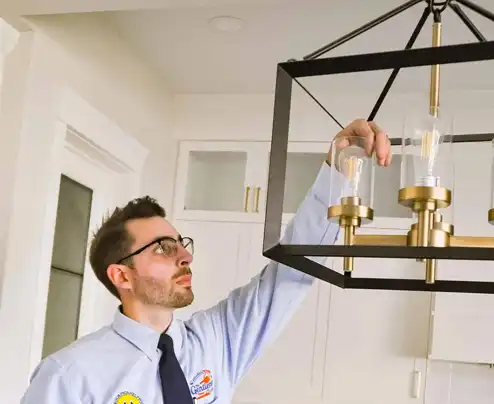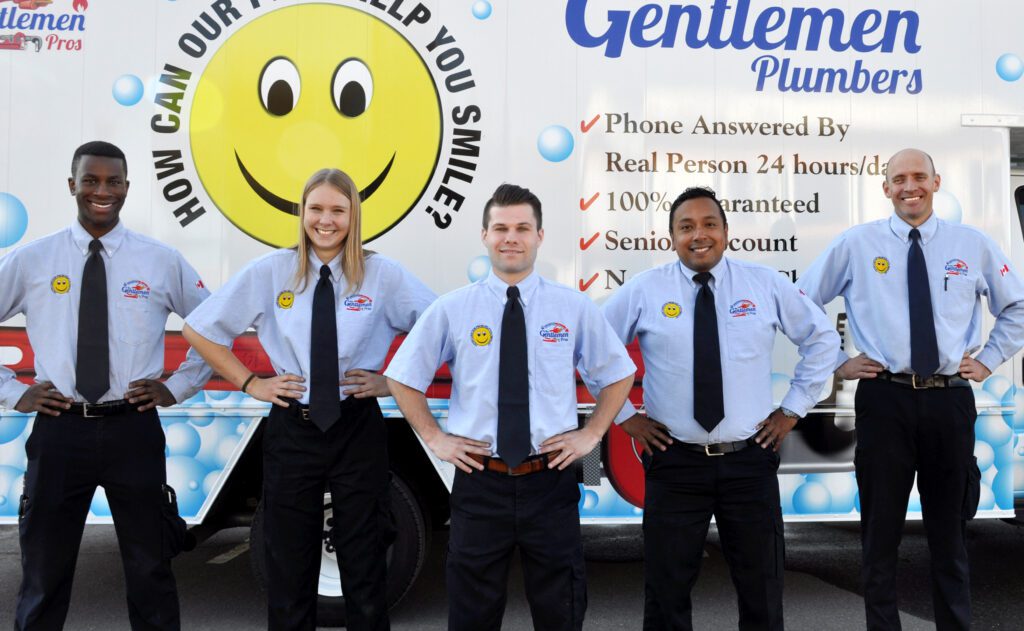Same Day Service
Since 2001
Your electrical system doesn’t just power appliances and devices that we use every day and make our lives easier. It also powers important safety devices. Items like carbon monoxide detectors.

Carbon monoxide (CO) is a gas that can be produced by any fuel-burning appliance and device such as gas stoves, furnaces, and hot water heaters. At high levels, it is very dangerous and can cause serious illness and even death.
What makes it even more dangerous is that it is colourless, tasteless, and almost odorless so you don’t even know when it is building up in your house. You have no warning until something is seriously wrong.
This is why installing carbon monoxide detectors in your home is so important. Even though it’s been the law in Alberta since 2006 to have carbon monoxide detectors in new builds, many of us don’t live in houses built since 2006. So it is up to us to make sure we have this important safety device in our homes.
It is recommended that you have these life-saving detectors in several areas of your house. Don’t worry our electricians know all the places a carbon monoxide detector should be located. They also know how to properly install them and all the specifications the installed detectors must meet.
Keep your family healthy and safe and give us a call at (780) 628-1734. Our considerate customer service representatives would love to book an electrician for you. Or you can talk to us through our chat function by clicking on the Chat With Us icon at the bottom of this page or you can fill out our online form.
We’d love to hear from you.
Below you will find information on the symptoms of carbon monoxide poisoning, how it is treated, and how long the symptoms can last.
The early symptoms of Carbon monoxide poisoning are similar to the symptoms of the flu. This is one reason carbon monoxide is dangerous. It is easy to ignore the symptoms until they are serious, delaying when people get treatment.
Carbon monoxide binds with hemoglobin in the red blood cells of our blood forming carboxyhemoglobin. Carboxyhemoglobin reduces the capacity of hemoglobin to carry oxygen. It damages the release of oxygen to the tissues resulting in hypoxia.
The impacts of carbon monoxide poisoning are dependent on several factors:
The higher the concentration of carbon monoxide and the higher the level of activity of the person during the exposure, the shorter the amount of time until the person experiences symptoms.
As you can see, exposure to carbon monoxide can have serious repercussions. Make sure your carbon monoxide detectors are in good working order.
The symptoms of carbon monoxide poisoning are non-specific meaning they could be caused by several reasons, for example, the flu. So it is important to look for other clues in combination with the symptoms.
Clues of carbon monoxide poisoning to look for include:
The treatment for carbon monoxide poisoning is oxygen.
If you suspect carbon monoxide poisoning, immediately get outside away from the source of the gas, and call 911. Do not go back inside until emergency responders tell you it is safe to do so.
If you are unable to go outside, open a window or a door, stay close to it, and breathe in the fresh air. Call 911.
For longer exposure or exposure to a higher concentration of carbon monoxide, the treatment is 100 percent oxygen. Medical personnel will place an oxygen mask over the patient’s nose and mouth so they can breathe the pure oxygen. Pure oxygen will help offset the carbon monoxide in your body.
Individuals who cannot breathe on their own will be put on a ventilator which will do the breathing for them.
For severe carbon monoxide poisoning hyperbaric oxygen therapy may be used. Patients are placed in an oxygen chamber where the air pressure is two to three times higher than usual. The higher air pressure helps to replace the carbon monoxide in the blood with oxygen.
This therapy helps protect the brain and heart from the damage caused by carbon monoxide. It can also be used on pregnant women to help protect the unborn baby from carbon monoxide damage.
It will depend on the severity of the exposure to carbon monoxide. For mild symptoms, you should notice the symptoms will reduce or completely clear up after breathing in fresh air or breathing in pure oxygen from a mask. It can take up to 24 hours for the effects of the carbon monoxide poisoning to subside.
For longer exposure or exposure to a higher concentration of carbon monoxide, you can have lingering symptoms for up to two weeks after your exposure to carbon monoxide.
For very serious exposure, the patient can have symptoms or relapses of symptoms for several weeks. They can also become extremely sensitive to carbon monoxide for the rest of their lives.



